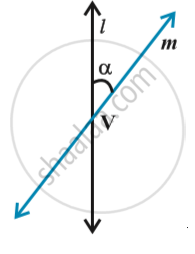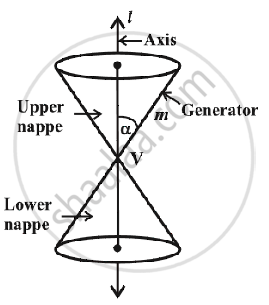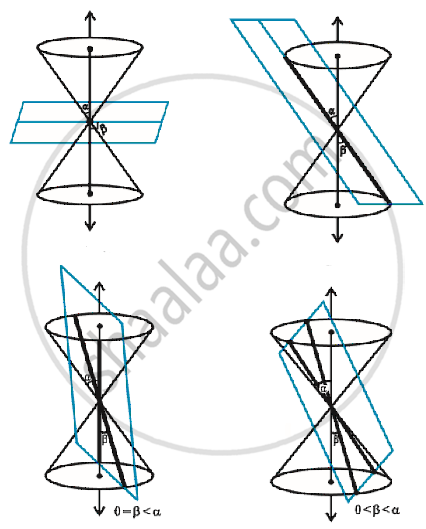Topics
Mathematical Reasoning
- Mathematically Acceptable Statements
- New Statements from Old
- Special Words Or Phrases
- Contrapositive and Converse
- Introduction of Validating Statements
- Validation by Contradiction
- Difference Between Contradiction, Converse and Contrapositive
- Consolidating the Understanding
Sets
- Sets and Their Representations
- Empty Set (Null or Void Set)
- Finite and Infinite Sets
- Equal Sets
- Subsets
- Power Set
- Universal Set
- Venn Diagrams
- Intrdouction of Operations on Sets
- Union of Sets
- Intersection of Sets
- Difference of Sets
- Complement of a Set
- Practical Problems on Union and Intersection of Two Sets
- Proper and Improper Subset
- Open and Close Intervals
- Disjoint Sets
- Element Count Set
Sets and Functions
Relations and Functions
- Cartesian Product of Sets
- Concept of Relation
- Concept of Functions
- Some Functions and Their Graphs
- Algebra of Real Functions
- Ordered Pairs
- Equality of Ordered Pairs
- Pictorial Diagrams
- Graph of Function
- Pictorial Representation of a Function
- Exponential Function
- Logarithmic Functions
- Brief Review of Cartesian System of Rectanglar Co-ordinates
Algebra
Trigonometric Functions
- Concept of Angle
- Introduction of Trigonometric Functions
- Signs of Trigonometric Functions
- Domain and Range of Trigonometric Functions
- Trigonometric Functions of Sum and Difference of Two Angles
- Trigonometric Equations
- Trigonometric Functions
- Truth of the Identity
- Negative Function Or Trigonometric Functions of Negative Angles
- 90 Degree Plusminus X Function
- Conversion from One Measure to Another
- 180 Degree Plusminus X Function
- 2X Function
- 3X Function
- Expressing Sin (X±Y) and Cos (X±Y) in Terms of Sinx, Siny, Cosx and Cosy and Their Simple Applications
- Graphs of Trigonometric Functions
- Transformation Formulae
- Values of Trigonometric Functions at Multiples and Submultiples of an Angle
- Sine and Cosine Formulae and Their Applications
Coordinate Geometry
Complex Numbers and Quadratic Equations
- Concept of Complex Numbers
- Algebraic Operations of Complex Numbers
- The Modulus and the Conjugate of a Complex Number
- Argand Plane and Polar Representation
- Quadratic Equations
- Algebra of Complex Numbers - Equality
- Algebraic Properties of Complex Numbers
- Need for Complex Numbers
- Square Root of a Complex Number
Calculus
Mathematical Reasoning
Linear Inequalities
Principle of Mathematical Induction
Statistics and Probability
Permutations and Combinations
- Fundamental Principles of Counting
- Permutations
- Combination
- Introduction of Permutations and Combinations
- Permutation Formula to Rescue and Type of Permutation
- Smaller Set from Bigger Set
- Derivation of Formulae and Their Connections
- Simple Applications of Permutations and Combinations
- Factorial N (N!) Permutations and Combinations
Binomial Theorem
- Introduction of Binomial Theorem
- Binomial Theorem for Positive Integral Indices
- General and Middle Terms
- Proof of Binomial Therom by Pattern
- Proof of Binomial Therom by Combination
- Rth Term from End
- Simple Applications of Binomial Theorem
Sequence and Series
Straight Lines
- Slope of a Line
- Various Forms of the Equation of a Line
- General Equation of a Line
- Distance of a Point from a Line
- Brief Recall of Two Dimensional Geometry from Earlier Classes
- Shifting of Origin
- Equation of Family of Lines Passing Through the Point of Intersection of Two Lines
Conic Sections
- Sections of a Cone
- Concept of Circle
- Introduction of Parabola
- Standard Equations of Parabola
- Latus Rectum
- Introduction of Ellipse
- Relationship Between Semi-major Axis, Semi-minor Axis and the Distance of the Focus from the Centre of the Ellipse
- Special Cases of an Ellipse
- Eccentricity
- Standard Equations of an Ellipse
- Latus Rectum
- Introduction of Hyperbola
- Eccentricity
- Standard Equation of Hyperbola
- Latus Rectum
- Standard Equation of a Circle
Introduction to Three-dimensional Geometry
Limits and Derivatives
- Intuitive Idea of Derivatives
- Introduction of Limits
- Introduction to Calculus
- Algebra of Limits
- Limits of Polynomials and Rational Functions
- Limits of Trigonometric Functions
- Introduction of Derivatives
- Algebra of Derivative of Functions
- Derivative of Polynomials and Trigonometric Functions
- Derivative Introduced as Rate of Change Both as that of Distance Function and Geometrically
- Limits of Logarithmic Functions
- Limits of Exponential Functions
- Derivative of Slope of Tangent of the Curve
- Theorem for Any Positive Integer n
- Graphical Interpretation of Derivative
- Derive Derivation of x^n
Statistics
- Measures of Dispersion
- Concept of Range
- Mean Deviation
- Introduction of Variance and Standard Deviation
- Standard Deviation
- Standard Deviation of a Discrete Frequency Distribution
- Standard Deviation of a Continuous Frequency Distribution
- Shortcut Method to Find Variance and Standard Deviation
- Introduction of Analysis of Frequency Distributions
- Comparison of Two Frequency Distributions with Same Mean
- Statistics Concept
- Central Tendency - Mean
- Central Tendency - Median
- Concept of Mode
- Measures of Dispersion - Quartile Deviation
- Standard Deviation - by Short Cut Method
Probability
- Random Experiments
- Introduction of Event
- Occurrence of an Event
- Types of Events
- Algebra of Events
- Exhaustive Events
- Mutually Exclusive Events
- Axiomatic Approach to Probability
- Probability of 'Not', 'And' and 'Or' Events
Notes
Let l be a fixed vertical line and m be another line intersecting it at a fixed point V and inclined to it at an angle α Fig.
Suppose we rotate the line m around the line l in such a way that the angle α remains constant. Then the surface generated is a double-napped right circular hollow cone and extending indefinitely far in both directions Fig.

the point V is called the vertex; the line l is the axis of the cone. The rotating line m is called a generator of the cone. The vertex separates the cone into two parts called nappes.
If we take the intersection of a plane with a cone, the section so obtained is called a conic section. Thus, conic sections are the curves obtained by intersecting a right circular cone by a plane.
We obtain different kinds of conic sections depending on the position of the intersecting plane with respect to the cone and by the angle made by it with the vertical axis of the cone. Let β be the angle made by the intersecting plane with the vertical axis of the cone Fig.

1) Circle, ellipse, parabola and hyperbola:
When the planes cuts the nappe (other than vertex) of the cone, we have the following situations:
1) When β = 90o, the section is a circle Fig.
2) When α < β < 90o, the section is an ellipse Fig.
3) When β = α; the section is a parabola Fig.
(In each of the above three situations, the plane cuts entirely across one nappe of the cone).
4) When 0 ≤ β < α; the plane cuts through both the nappes and the curves of intersection is a hyperbola Fig.

2) Degenerated conic sections:
When the plane cuts at the vertex of the cone, we have the following different cases:
1) When α < β≤ 90^0, then the section is a point Fig.
2) When β = α, the plane contains a generator of the cone and the section is a straight line Fig. It is the degenerated case of a parabola.
3) When 0 ≤β < α, the section is a pair of intersecting straight lines Fig. It is the degenerated case of a hyperbola.

